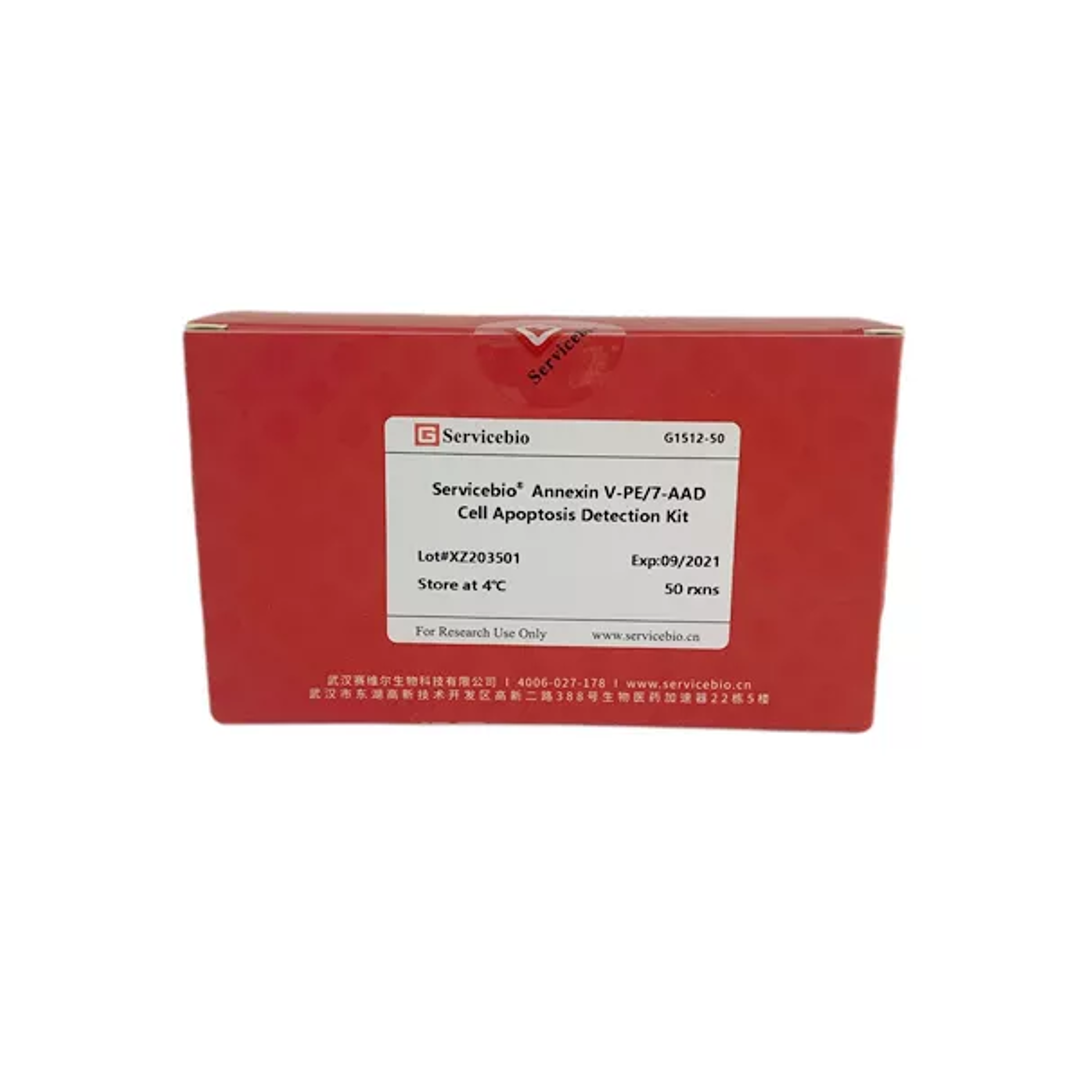- Products
- Consumables
- Equipment
- Reagent
- Culture Media
- Buffer
- Powder
- Molecular Assay
- Nucleic Acid Preservation & Remover
- Nucleic Acid Extraction
- Reverse Transcription
- PCR Amplification
- Nucleic Acid Electrophoresis
- Protein Assay
- Protein Extraction
- Gel Preparation
- Protein Electrophoresis
- Protein Transfer
- Antibody
- ECL Kit
- Cell Separation and Digestion
- Nucleus Fluorescence Detection
- Cell Apoptosis Detection
- Cell Proliferation Detection
- Pathological
- Fixative & Dewaxing Liquid
- Staining Solution
- Antigen-Retrieval Solution
- Immunohistochemistry Kit
- Immunofluorescence Staining Kit
- Mounting Media
- Monitoring Equipment
- Digital 3D Solutions
- Radiography & Imaging Systems
- Dental Units and Accessories
- Handpiece
- Scaling and Polishing
- Files and Burs
- Implants Surgery
- Endodontics
- Laser System
- Maintenance Disinfection
- General Dental Products
- Curing Light
- Distilled Water Machine
- Furniture and Designs
- Base Plate Wax
- Cotton roll dispensers
- Disposable Saliva Ejectors
- Micro Applicator
- Mixing Bowl and Spatula
- Bur holder box
- Dam Kit
- Safety Glasses
- Sectional Contoured Matrices Kit
- Disposable Dental Air Water Syringe Tips
- Denture Box
- Others
- Retractor
- Implant Tray
- Mobile Side Cabinet in Consulting Room
- Solutions
- Careers
- About Us
G1512-50T / 100T Annexin V-PE/7-AAD Cell Apoptosis Detection Kit
Apoptosis is a normal physiological process that occurs in the process of embryonic development and maintenance of tissue homeostasis. It is accompanied by many morphological changes. Among them, the loss of cell membrane is one of the early characteristics of apoptosis. In normal cells, phosphotidylserine (PS) is only distributed on the inner side of the phospholipid bilayer of the cell membrane, but in the early stage of apoptosis, PS will flip from the inner side of the lipid membrane to the outer side, exposing it to the outside of the cell. Annexin V (Annexin V) is a Ca2+-dependent phospholipid-binding protein with high affinity for PS and specifically binds to cells exposed to PS. Therefore, Annexin V is used as one of the indicators for detecting early cell apoptosis. 7-AAD is a nucleic acid dye that can only penetrate the cell membrane of late apoptotic and dead cells and stain the nucleus to mark late apoptotic and necrotic cells.
This product uses phycoerythrin (Phycoerythrin, PE) to label Annexin V as a detection probe to detect early cell apoptosis. At the same time, 7-AAD is used to distinguish survival cells from necrotic and late apoptotic cells. Combined use of Annexin V-PE and 7-AAD, live cells show negative staining (Annexin V-/7-AAD-), early apoptotic cells show single fluorescence positive (Annexin V+/7-AAD-), and late apoptotic cells And necrotic cells showed double fluorescence positive (Annexin V+/7-AAD+). This kit is suitable for flow cytometry or fluorescence microscope detection.
Quantity
Product Variation:
| Item code | Description | Volume |
|---|---|---|
| G1512-50T | Annexin V-PE/7-AAD Cell Apoptosis Detection Kit | 50T |
| G1512-100T | 100T |
Package Contents:
| Item code | Description | G1512-50T | G1512-100T |
|---|---|---|---|
| G1512-1 | Annexin V-PE | 250µL | 2x250µL |
| G1512-2 | 7-AAD | 250µL | 2x250µL |
| G1512-3 | 1×Binding Buffer | 25mL | 2x25mL |
| User Manual | 1pc | 1pc |
Technical Specification
Storage and transportation
Transport in wet ice;
Store at 2-8°C in the dark, valid for 12 months.
Operation Steps:
- Suspension cells: Take the cell suspension, and collect the cells by centrifugation at 500 g for 5 min at 4°C;
Adherent cells: first collect the cell culture supernatant. After digestion with EDTA-free trypsin (G4002 recommended), combine with the cell culture supernatant, and collect the cells by centrifugation at 500 g for 5 min at 4°C. Trypsin digestion time should not be too long, so as to avoid excessive digestion and cause false positives. - Wash the cells twice with pre-cooled PBS (G4202 recommended), and collect the cells by centrifugation at 500 g each time for 5 min at 4°C;
- Gently resuspend the cells in the pre-chilled 1×Binding Buffer and adjust the cell concentration to 1~5×106/mL;
- Take 100 μL of cell suspension, add 5 μL Annexin V-PE and 5 μL 7-AAD, mix gently, and protect from light at room temperature for 8-10 min;
- Add 400 µL of pre-chilled 1×Binding Buffer, shake gently, and perform detection with a flow cytometer or fluorescence microscope within 1 h.
Result analysis
- Flow Cytometry
a. Select the appropriate voltage and adjust the light compensation during flow cytometry detection and analysis. It is recommended to set a negative control (without any markers) for adjusting the voltage and single-label control (only Annexin V-PE and Only add 7-AAD) for adjustment and compensation;
b. Reference examples of flow cytometry detection and analysis:
Jurkat T lymphoma cells were induced with 5 µM Camptothecin for 6 h. Refer to the above experimental procedure and use flow cytometry to detect the results. The results are shown in the figure below.
The maximum excitation wavelength of PE is 565 nm and the maximum emission wavelength is 578 nm; the maximum excitation wavelength of 7-AAD is 546 nm and the maximum emission wavelength is 647 nm. The two-dispersion point diagram was drawn by the relevant analysis software of the flow cytometer, with PE on the abscissa and 7-AAD on the ordinate. In a typical experiment, living cells have no fluorescence, and the scattered points are in the first quadrant of the lower left. The apoptotic cells in the early stage have strong orange-red fluorescence, and the scattered points are located in the second quadrant of the lower right. Late apoptotic cells and necrotic cells present orange-red and pink double fluorescence, and the scattered points are located in the third quadrant of the upper right.
- Fluorescence microscope inspection
Add 5-10 µL of cell suspension double-stained with Annexin V-PE and 7-AAD on the glass slide, cover with a cover glass, and observe under a fluorescence microscope with a two-color filter. Annexin V-PE is orange-red Fluorescent signal, 7-AAD is pink fluorescent signal.
Notes:
- During the entire experiment, the operation should be as gentle as possible to avoid cell breakage and affect the experimental results.
- Washing the cells with PBS cannot be omitted, and at the same time, remove the residual PBS as much as possible.
- When using trypsin to digest cells, you should be careful to avoid artificial damage to the cells and control the digestion time. If the digestion time is too short, the cells need to be blown off to fall off, which is likely to cause mechanical damage to the cell membrane; if the digestion time is too long, the cell membrane is also vulnerable to damage. Affect the test results. In addition, pancreatin containing EDTA cannot be used. EDTA will affect the binding of Annexin V and PS.
- After the adherent cells are stimulated by apoptosis, if some of the cells float, it is necessary to collect the cell culture supernatant and the adherent cells and stain them at the same time, which will make the results more accurate.
- Annexin V-PE and 7-AAD are sensitive to light, please avoid light during operation. The test should be carried out as soon as possible after the reaction.
- Please wear laboratory clothes and disposable gloves during the experiment to avoid contamination and ensure safety.
This product is for scientific research purposes only, not for clinical diagnosis!

Medical
Therapeutic Equipment
- HIFU
- Humidifier
- Ventilators
General Hospital Equipment
Diagnostic Equipment
Surgical Consumables
CareX™ robotics bedside care solutions

In Vitro Diagnostics and Life Sciences
Consumables
- PCR Consumables
- Tubes
- Micro-centrifuge Tube
- Low Retention Centrifuge Tube
- Large Volume Centrifuge Tube, Sterile
- Centrifuge Tube 5mL, Sterile
- Test Tube
- Tube Rack
- Coolbox
- Screw Cap Tube
- Screw Cap
- Transport Tube
- Cryoware
- Filtration
- Vacuum Filtration System
- Syringe Filter
- Membrane Filter
- Filter Paper
- Disposable Bottle Top Vacuum Filter
- Cell Culture & Microbiology
- Cell Culture Dish
- Cell Culture Flask
- Erlenmeyer Flask
- Cell Culture Plate
- Cell Culture Insert
- Bio-reaction Tubes
- Cell Scraper & Lifter
- Glass Coverslip
- Confocal Dish
- Chamber Slide
- Cell Strainer
- Confocal Plate
- Petri Dish
- Pipette Tips
Reagent
- Culture Media
- Buffer
- Powder
- Molecular Assay
- Nucleic Acid Preservation & Remover
- Nucleic Acid Extraction
- Reverse Transcription
- PCR Amplification
- Nucleic Acid Electrophoresis
- Protein Assay
- Protein Extraction
- Gel Preparation
- Protein Electrophoresis
- Protein Transfer
- Antibody
- ECL Kit
- Cell Separation and Digestion
- Nucleus Fluorescence Detection
- Cell Apoptosis Detection
- Cell Proliferation Detection
- Pathological
- Fixative & Dewaxing Liquid
- Staining Solution
- Antigen-Retrieval Solution
- Immunohistochemistry Kit
- Immunofluorescence Staining Kit
- Mounting Media
Monitoring Equipment

Dental
Digital 3D Solutions
Radiography & Imaging Systems
Dental Units and Accessories
Scaling and Polishing
Files and Burs
Implants Surgery
- BC and BV Series
- Implant System
- Surgical Kits
Endodontics
Maintenance Disinfection
- Sterilization Line
- Sealing Machine
General Dental Products
- Curing Light
- Distilled Water Machine
- Furniture and Designs
- Base Plate Wax
- Cotton roll dispensers
- Disposable Saliva Ejectors
- Micro Applicator
- Mixing Bowl and Spatula
- Bur holder box
- Dam Kit
- Safety Glasses
- Sectional Contoured Matrices Kit
- Disposable Dental Air Water Syringe Tips
- Denture Box
- Others
- Retractor
- Implant Tray
- Mobile Side Cabinet in Consulting Room
VetCare Solutions
Anesthesia
Dental Equipment
Critical Care Equipment
Surgical Equipment
Laboratory Diagnostics
Examination Diagnostics
Grooming Equipment
Cages
Eco Friendly Products
Consumables
SGVET Suntec
Quest Asia Technologies
SAMSUNG Ultrasound
Products
Media Center
About Us
© 2025 AJJ Healthcare Management Pte. Ltd
Powered by.png) Xsosys Technology (S) Pte. Ltd.
Xsosys Technology (S) Pte. Ltd.





